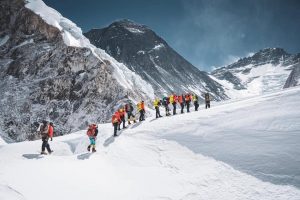In the context of Nepal today, temperature warming and snow melting have been elevated as a public concern and a dire issue. Due to the climate change-induced rising heat and the snow melting, numerous detrimental consequences have been witnessed so far. It has affected several sectors and ecosystems of Nepal, entailing the forests, water, mountains besides other aspects.
Below are major highlights of the impact of rising heat and snow melting on different ecosystems in Nepal.
1. Phenology alteration
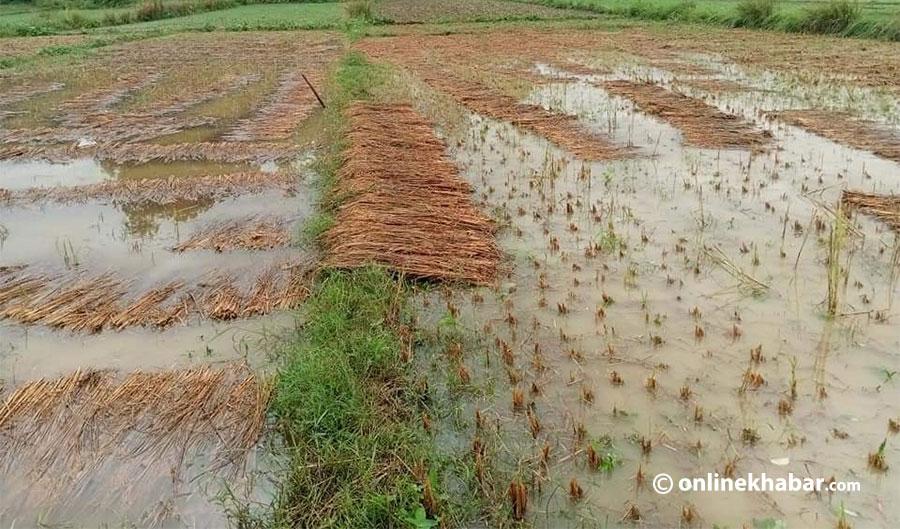
Once the heat rises earlier than average in a forest ecosystem, it can create severe consequences in the flowering and fruiting of the plants in the forest. The alteration in plant and animal phenology has severe effects on their reproduction.
Thus, in turn, rising heat affects the interaction of plant pollination. It is, hence, not surprising to depict that early fruiting and flowering in higher altitudes have been visualised. Several research findings prioritised the early flowering of Ficus religiosa and Bombax ceiba in the tropical lowlands.
The increase in the winter temperature has caused early ripening of the fruits within two weeks, thereby causing a decrease in the size of Myrica esculenta, as stressed by the research findings. There was the early flowering season in the case of Rhododendron species in roughly one month in the mid-hills of Nepal.
The flowering time of Rhododendron arboreum was recorded delayed by three to six weeks in the western part of the sub-alpine regions. Both early and delayed flowering and fruit ripening have significant consequences on seasonality. Besides these, a series of outcomes could lead to Nepal’s forest biodiversity.
2. Habitat shift
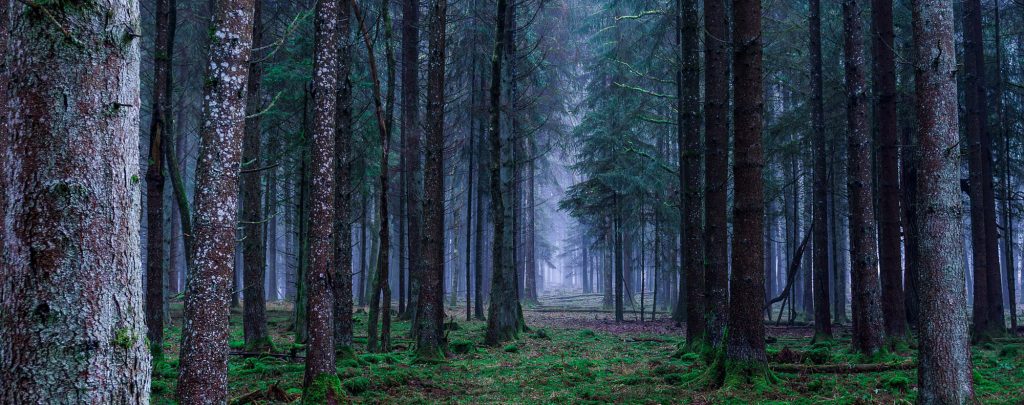
There is a shift in the population range and an alteration in the species migration due to rising heat and snow melting. In the eastern Himalayan, R arboretum is coping with the changing heat conditions. Several researchers insisted on the findings of migrating R arboretum in upslope by 0.26 m in the central part of Nepal. Juniperus indica and Alnus nepalensis have been migrating in the forests as well.
The research further illustrates that rising heat has caused the plant species to expand their distribution range by 300 metres. From this scenario, we could conveniently believe how the heat rise causes detrimental impacts on the species of the forest ecosystem.
It is noteworthy that until and unless the species do not get a favourable environment, it may affect the species population, contributing to the habitat shrinking and expansion. The upward shifting has been recorded in the case of Ficus roxburghii and Schima wallichii, besides Castanopsis hystrix.
The cold lover snow leopard is vulnerable due to rising heat in its natural forest environment. Thus, they are shifting towards the north due to their loss in habitat by 40 %. The snow leopard moves upwards with the increase in treeline shift due to the warmer climate. Without a doubt, it could have a severe influence on the prey-predator relationship, food chain, food web, and the high-altitude forest ecosystem.
Rising heat has critically impacted Bos mutus, and Ursus arctos, the species recorded in the alpine and the sub-alpine regions of the Himalaya due to treeline shift. The snow melting excessively has degraded the habitat of Neopicrorhiza scrophulariiflora and Ophiocordyceps Sinensis, the medicinal plants found in the high altitude.
3. Invasions
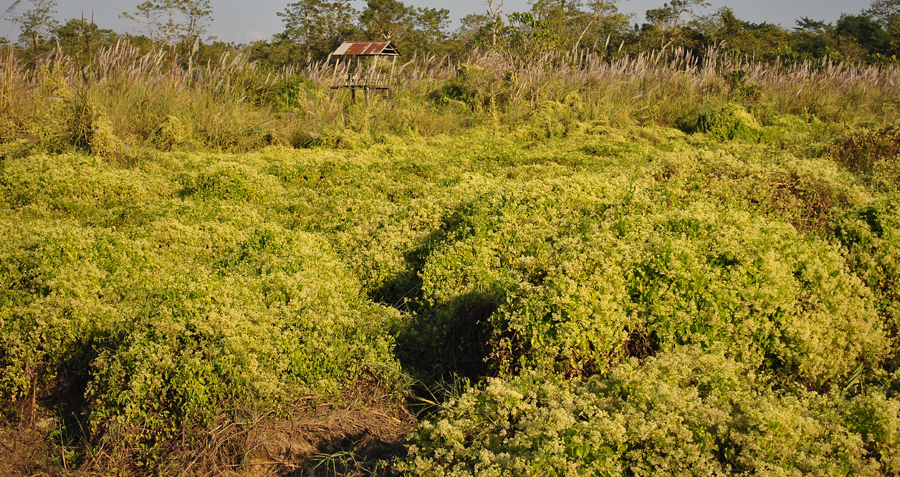
Undoubtedly, when the plant species in a forest ecosystem get more heated than the normal one due to rising heat, they may invade several surrounding species. It leads to species invasion with restrictions in the proper growth and development of the plant species in the natural and artificial surroundings. Once the snow melts on a massive scale, it results in flooding. It creates a wide array of impacts on the Himalayan forest diversity, thereby sweeping away all the plant species and deteriorating the forest environment.
As a result of this flood, there is excessive growth of the invasive plant species, which entails Parthenium hysterophorus, Lantana camara, Mikania micrantha. For instance, Mikania micrantha targets the habitat of one-horned rhinoceros in the Chitwan National Park of Nepal.
It suppresses the growth of the grasslands, keeping the rhinoceros survival into threat. There are a series of impacts caused by the invasion of plant species by the rising heat, which is the inclusion of deteriorating the soil quality, losing the soil nutrients, and creating an alteration in the species composition in any region.
Due to the rising heat, Eichhornia crassipes in the Taudaha lake have invaded the other plant species. Besides these, the warming trend in the Himalayan region is increasing tremendously.
Taking the forest ecosystems into account, the researchers have even revealed that the tigers from the low land could be on the brink of extinction once the alien species invade their natural habitat. It may have drastic consequences in agroforestry too.
Someone might be surprised to know that even in the high altitude regions, exotic species of the lowland Cirsium spp have invaded the grazing pasturelands due to rising heat.
4. Drought

The high snow loss due to rising heat may lead to the desertification of the forest. The vegetation might die due to a lack of appropriate water supply. This water deficiency influences the sowing of the seeds.
On the other hand, drought conditions may also lower agricultural yields. The impact of rising heat has already become a problem in the Terai belt of Nepal. But, there is minimal research concerning high altitude forest research.
5. Water oxygen deficiency
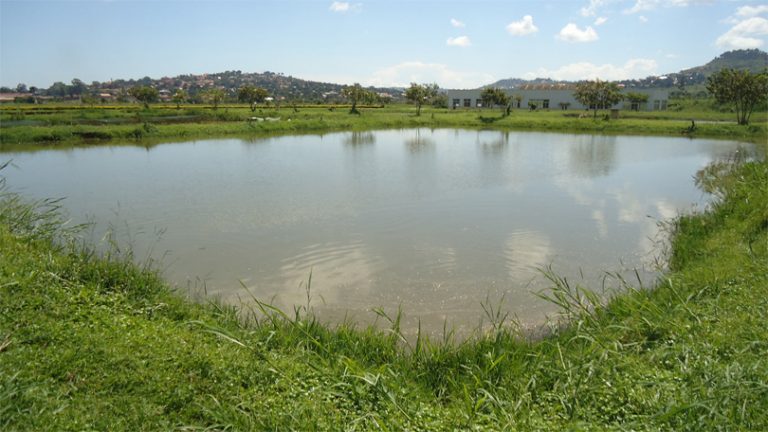
The increase in rising heat-induced climate change possesses numerous impacts. Regarding the wetland ecosystem, thermal stratification may occur after excessive heating and, in turn, fluctuates the water level. Once the water level fluctuates, it is inevitable that aquatic organisms such as fish are hampered. To sum it up, rising heat could lead to the lack of oxygen in the water.
6. Wetlands
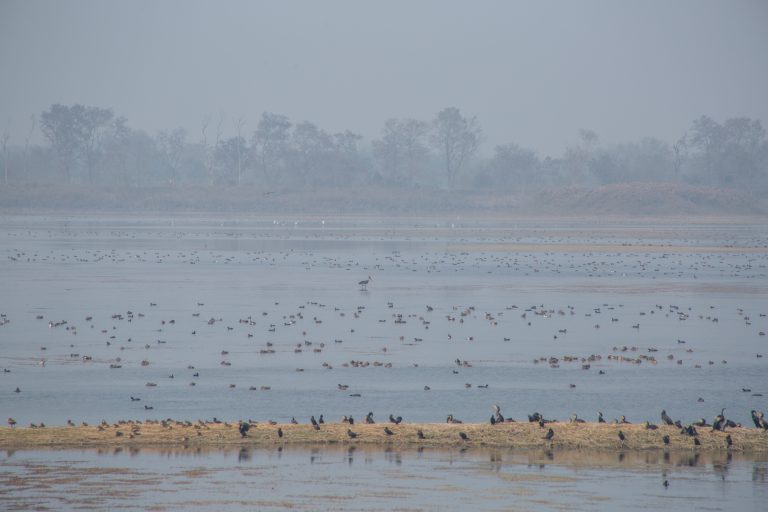
Melting snow may lead to the shrinkage of the wetlands of Nepal. Since wetlands act as a breeding spot for several native and migratory species upon the water fluctuations, it can negatively affect the macro-invertebrate and other aquatic organisms.
The aquatic vegetation may reflect changes gradually. The marine organisms that rely on the planktons get seriously hampered. The rising heat as a cause of anthropogenic-induced activities may enhance eutrophication and boost algal bloom.
Because of this, the heat could not penetrate directly into the lower water surface and affect the fish and the other aquatic creatures. Considering the case of Nepal, in the Jagadishpur reservoir, a Ramsar listed wetland, many migratory birds arrive from Siberia in the wintertime. When the heat rises, it may threaten their behaviour and the migratory pattern.
7. Higher altitude communities
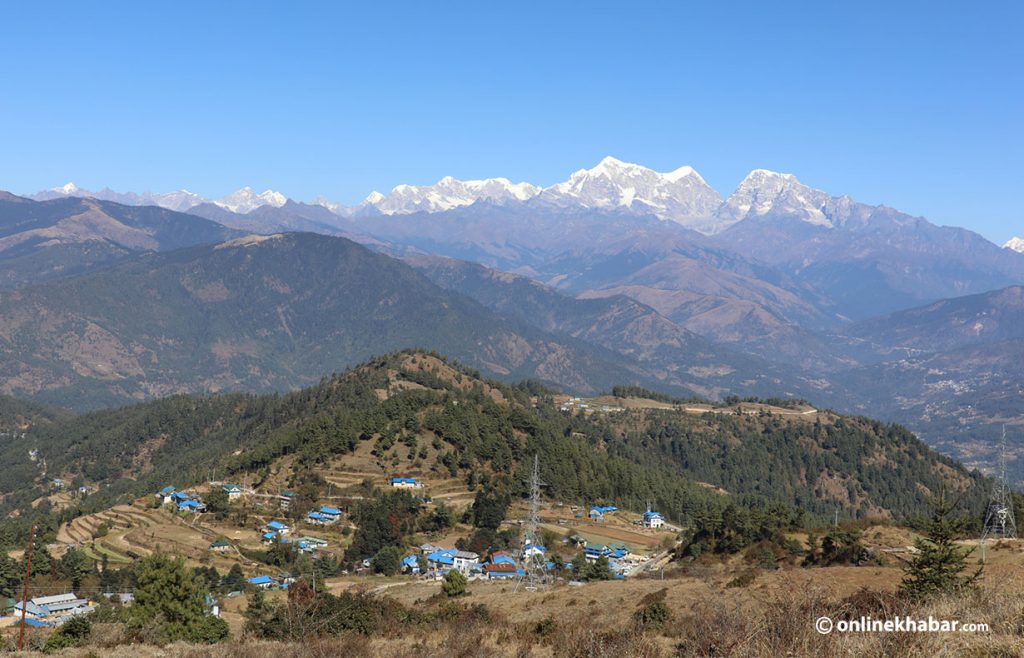
Several research findings make us realise the detrimental impact of rising heat and snow melting on the domestic water resources in the Mount Everest region of Nepal. Since higher-altitude residents depend on the glacier water resources, it threatens the community’s livelihood.
The Khumbu valley of Nepal contributes significantly to serving the water for the communities. On the snowpack declination resulting from rising heat in Nepal, it has been detected that roughly two-thirds of the water arises from the glacial period during the dry season.
Compared to others, research concerning the snow melting effects in the Himalayas of Nepal seems very limited. The indigenous communities who rely on the fish for survival get affected following massive snow melts, hampering the fishing.
8. Lower regions
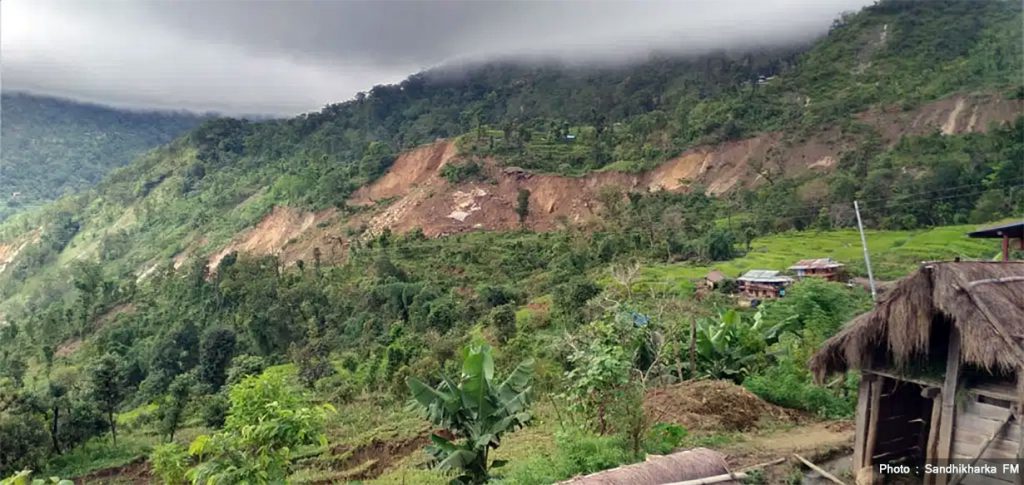
The snow and the glacier melting contribute roughly 14 Km3/year, accounting for 10 % of the annual river flow in major catchments of Nepal. The studies highlight that elevation zones between the range of 5,000 m to 7,000 m in Nepal are likely to be affected by climate change-induced alterations.
Surface runoff is also affected by rising heat. In sum, it does hamper the river flow system and the riparian vegetation. The birds’ dependence on the riverine resources might displace their natural habitat and induce a stark difference in their behaviour. The several research works are consistent with each other, reflecting the findings that the species are getting more adverse effects.
9. Natural beauty
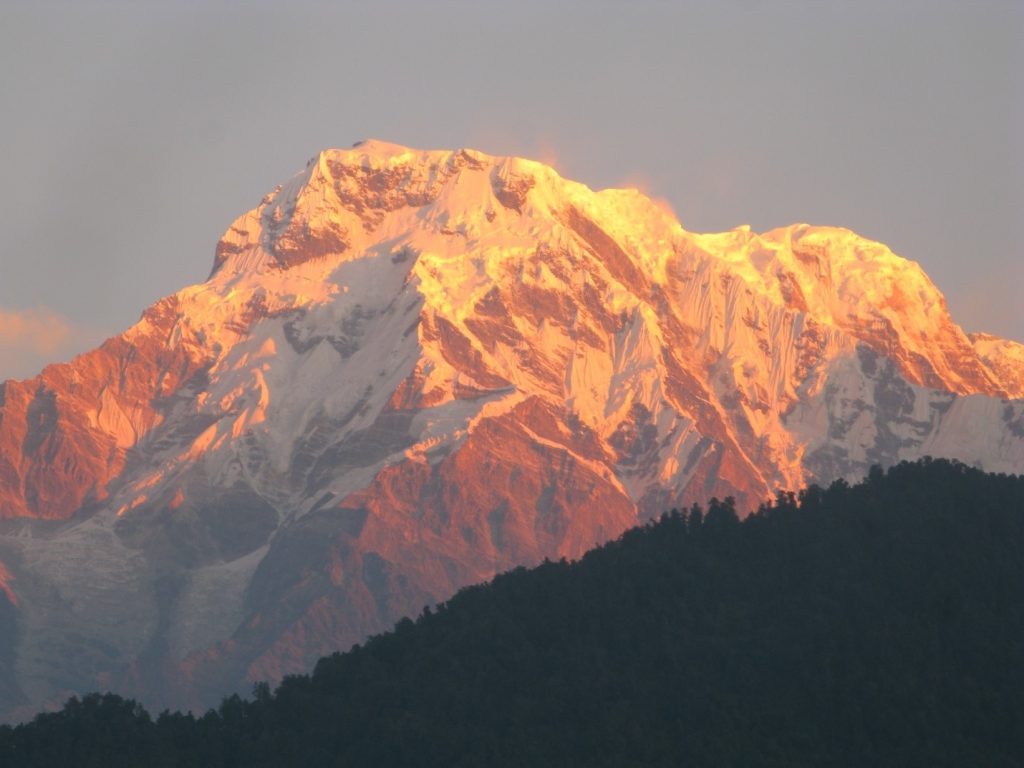
It is heart-wrenching to depict that when the rising heat targets the mountains of Nepal, it does deteriorate the quality of the mountains. The snow caps that had enhanced the hills’ pristine natural beauty do get degraded.
It is pretty much apparent that rapid melting and consequently a loss of the snow caps have impacts on almost all sectors including agriculture, forestry, aquatic ecosystems, local livelihoods such as fishing, and much more.
The dirty pollutants and threatening viruses absorbed from the atmosphere are deposited into the ice. Such activities undoubtedly make the glaciers absorb more heat, and melting coincides, releasing such millions of years old pollutants and viruses in our environment.
Conclusion
Nepal is too affected by global warming at an alarming rate. The genuine pride of our Nepal, glaciers, once melted heavily, undoubtedly create several catastrophic devastations in a wide array of sectors such as water, forest, agriculture, mountain, and many more. It looks pretty worrisome to see the glaciers melting as a cause of rising heat.
The current devastation concerning the rising heat has made us think twice before acting anymore. Therefore, it seems substantial to halt the warming at any cost and assure the conservation of our forests, water resources, mountains, and much more. It could, without a doubt, control the disasters induced by warming and provide a positive message to us and the future generations for nature conservation in the coming days.





